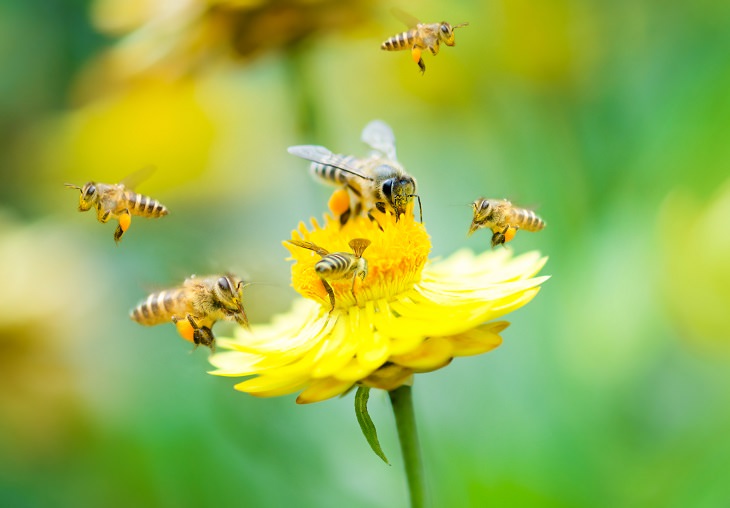
All over the world, bee populations have decreased dramatically due to habitat loss and pesticide use. However, green spaces in towns and cities can give bees a much-needed refuge and, if you happen to have a yard, then you can also help them, especially if you’re lazy about lawn care.
As it turns out, lawns with plenty of weeds such as clover and dandelions can offer pollen and nectar for bees in suburban areas where prime habitat is difficult to come by. Scientists recently identified 111 different bee species in just a handful of yards in Springfield, Massachusetts. Most of these were tiny sweat bees about the size of a grain of rice, but the yards also attracted bumblebees and honeybees.

Susannah Lerman, a research ecologist for the US Department of Agriculture’s Forest Services, says that “these were not yards that had pollinator gardens, they didn’t have special flowers, there weren’t next to forests or other types of more natural landscapes so that in and of itself was pretty amazing.”
She also found out that by mowing the lawn less frequently, you can help bees get the most out of your lawn. Those lawns which were mowed every two weeks or so, attracted more bees that those mowed on a weekly basis. “It’s a really nice marriage between having a lawn that looks nice and lawn that’s good for bees,” says Lerman, who published her findings in the journal “Biological Conservation.
To gain access to people’s gardens, Lerman and her team offered to mow them for free. They visited a total of 16 houses over the course of two years from May through to September, mowing them either weekly, once every two weeks, or once every three weeks. The researchers checked in once every couple of weeks to see how many bees the lawn had attracted and how many lawn flowers such as dandelions had sprung up.
They also noted how many planted flowers such as azaleas and marigolds were growing in the yards and how sheltered they were by trees. This was to ensure that the lawn flowers were responsible for any differences between the yards, not the other plants.
The yards that were mowed less frequently did indeed have more flowers. However, having the most flowers didn’t necessarily translate into having the most bees. Lerman says that “perhaps in the yards that were mowed every three weeks the grasses were just a bit too long.” The tiny sweat bees that were the most common visitors to the lawns might have had trouble reaching the flowers on these more unkempt lawns.
Since Lerman and her team only looked at lawns in western Massachusetts, it’s not exactly clear yet whether the “lazy lawnmower” approach will help bees in other climates. In the future, she would like to try the experiment again in different parts of the US. She and her colleagues at the Forest Service and the City University of New York are now investigating how bees, birds, and other animals respond to different lawn care practices in six cities.

Not a green thumb? No problem!
If you live in the northeast and want to make your yard more appealing for bees, mowing every two weeks seems to hit the sweet spot. One advantage of this approach is that it’s a lot less work than planting a pollinator garden.
These gardens are great as they provide a lot of nectar and pollen for bees and other pollinators, but to maintain a pollinator garden, you need to have time, space, money, and the knowledge of how to care for your plants. On the other hand, mowing every two weeks is something that everybody with a lawn can do.
Should you decide to make the switch to “lazy lawn mowing,” Lerman suggests letting your neighbors know what you’re up to. She and her colleagues plan to create downloadable signs to explain that a lawn is bee-friendly (and that you’re not just neglecting it).
If whole neighborhoods or cities adopt the lazy lawnmower approach, it could have a huge impact for bees. Lawns cover more than 63,000 square miles in the US, an area roughly the size of the state of Florida. This is a lot of grass.
There are also some other things that you can do to make your property bee-friendly without having to put in a lot of work. Lerman recommends not using pesticides and leaving a few bare patches, which can be ideal places for ground-nesting species to make their homes. Also, you should avoid using heavy mulches as this will make it difficult for bees to nest. Furthermore, when fall arrives, don’t rake up every single leaf – a leaf pile can create a shelter for bees in cold weather.
Source: popsci
Images: depositphotos